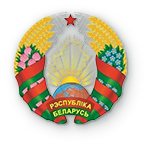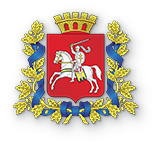History
The earliest settlements found on the territory of Vitebsk region date back to the era of the Early Stone Age. There are also sites and settlements that archeologists attribute to the Bronze and Iron Ages by the tools and artifacts that they discovered at ancient town sites and barrows. They also found many artifacts of various archeological cultures.
The first state known to be on this territory is the Polotsk Duchy. It was located in the basins of the Zapadnaya Dvina, Berezina Rivers, and a part of the Neman River basin; it was situated on the trade route from the Varangians to the Greeks, which stimulated its fast growth and prosperity.
The city of Polotsk became the centre of the Duchy. It was named after the Polota River, on which it was built. It was first mentioned in the chronicles in 862.
The first Duke of Polotsk and the founder of the dynasty was Rogvolod.
In 1101 a new Duchy appeared on Polotsk lands. It was Vitebsk Duchy with its centre in Vitebsk built in the valleys of the Luochosa and Vit’ba Rivers. Further through the XII century the two states developed close political and economical relations.
The legend has it that the city of Vitebsk was founded by Olga, the Grand Duchess of Kiev in 974. But in the chronicles, Vitebsk is first mentioned when the Great Duke of Kiev, Yaroslav the Wise, gave Vitebsk to Bryachislav Ezyaslavovitch, the Duke of Pototsk in 1021.
Both Polotsk and Vitebsk retinues fought in many historical battles. It is known for a fact that troops from Polotsk took part in Oleg’s wars with Byzantium; the regiments of the two states also fought together with Alexander Nevski, the Duke of Novgorod, in the battle on the Neva River in 1240 and in 1242 on the ice of Chudskoje Lake.
With feudalization in the IX and XIth centuries certain towns grew and developed rapidly. One of the border towns of the Polotsk Duchy was the town of Orsha that emerged in 1021 as is mentioned in the chronicles.
To protect the lands from invasions, throughout the XIIIth century a new state was being formed – the Grand Duchy of Lithuania, Russia, and Zhemojtiya. At the end of the XIIIth – beginning of the XIVth century most of the old Belarusian lands were united into this huge and powerful state including the Duchies of Vitebsk, Polotsk, Loukoml’, and Drouts’.
In the XV-XVIth centuries Polotsk and Vitebsk were big cultural and trade centres that traded widely not only with the immediate neighbours within the Grand Duchy of Lithuania, but also with Germany, Italy, Hungary, Moscow and its states.
The Grand Duchy of Lithuania that united old Belarusian lands played a very significant role in the creation of Belarusian nation and folk traits: the Belarusian language, traditional folk clothes and household.
Polotsk is a birthplace of the great humanist and publisher-pioneer F. Skoryna (born around 1490 —1551). He is also known as the author of forewords and epilogues to the books he published and decorated with engravings.
The architecture was experiencing extensive growth at that time. Many fortresses, castles, palaces and cult building appeared around this time, the biggest of them were in Polotsk and Vitebsk. The architecture of these buildings bore national traits of the XI — ХIIIth centuries as well as was influenced by the architecture of Western Europe.
The painters started to decorate Dukes’ palaces and churches with frescos.
Graphics was widely used for décor. The books were decorated with miniatures depicting scenes of battles, historical events, portraits of saints and dukes. A good example of such books is the Gospel from Orsha.
At the beginning of the XVIth century, after the administrative reform of the Grand Duchy of Lithuania new administrative units, voevoedes, appeared instead of Duchies. In 1504, Polotsk voevode and in 1508, Vitebsk voevoede were formed.
In spite of the wars and tension with the neighbours in the XVI — XVIIth centuries, Vitebsk was still a big administrative, crafts and trade centre of the voevoede with the population of about 10 thousand people. Starting from the XVIth century, there was a developed system of education in Vitebsk: orthodox, catholic, and later protestant churches and monasteries organized schools.
Polotsk (in 1498), and later Vitebsk (in 1597) and Orsha (in 1620) acquired the right to have a Coat of Arms. Thus, Polotsk and Vitebsk acquired their Coats of Arms.
The population of Vitebsk was mostly orthodox.
When Vitebsk became part of Poland, the Catholicism started to spread; new catholic churches and monasteries appeared in Vitebsk: in 1629, a Dominican Cathedral, in 1676 a St Bernard’s monastery with St. Antonio’s Cathedral operated in the town. Vitebsk Jesuitical collegium was built in 1682.
In the XVIth century, Orsha became a major religious and cultural centre. Starting in 1592, as a response to the catholic expansion many new orthodox communities started to appear around Orsha. Also, many crafts started to develop in Orsha: wood and metal carving, engraving, creating jewelry and armours.
At this time Polotsk monastery, St Bernard’s, Uniat and Orthodox monasteries were opened in Polotsk. In 1581 Polotsk Jesuitical collegium was established and it gave shelter to the Polotsk printing shop. After Brest Unia was adopted, famous St Sofia’s Cathedral in Polotsk was changed to a Uniat cathedral.
In 1796 the lands around Mogilev, Polotsk, and Pskov were united into one province with its centre in Vitebsk. It was called Vitebsk province and it was created in 1802.
When Vitebsk was made the centre of the newly created province with the residence of Belarusian General-Governor, city development flourished. In the second half of the XVIIIth century Vitebsk became second largest Belarusian city (after Mogilev). In 1777 the first industrial leather-processing enterprise appeared in Vitebsk; later several new enterprises were opened: tile, rope, and lime mills.
In 1797 Vitebsk Provincial printing house was opened.
The lands around Vitebsk continue to grow and develop; favorable geographical position in the close vicinity of navigable rivers allowed them to trade with Russian lands freely and easily.
During the Patriotic War of 1812 Vitebsk and the area suffered many hardships when heavy fighting occurred on its territory.
According to the population census of 1897, Vitebsk as a centre of province, had a population of 65871 people. In 1866 the Riga - Oreol railroad route crossed Vitebsk. Later, new railways connected the city with Moscow, Peterburgh, Kiev, and Brest.
Vitebsk, Polotsk, and Orsha were major cities of Vitebsk province at that time.
Social life of Vitebsk and its area in the XIXth century was strongly influenced by revolutionary ideas. A future Decembrist I. I. Gorbachevsky spent his young years and finished school in Vitebsk. N. M. Muravjev, one of the founders of the Northern Society of Decembrists, lived in Vitebsk in May-October 1821. A Decembrist, A. A. Bestuzhev-Marlinsky, worked in Polotsk and in Beshenkovichy. From September 1900 to the spring of 1901 I. V. Babuskin, a revolutioner, lived in Polotsk.
During the first Russian Revolution in 1905-1907 the population of Vitebsk, Polotsk, Orsha and other towns took an active part in strikes held in solidarity with the workers in Moscow.
Before World War I, the population of Vitebsk was 109 thousand people. The city kept its position as one of the biggest industrial centres in Western territories with 45 plants and factories giving work to 8 thousand people. At the beginning of March, 1917, the news of the February revolt inspired the creation of Soviets in Vitebsk, Polotsk and its area, and Drissensk and its area.
On December 10-17th, 1917, the I Special Congress of Vitebsk Provincial Soviet of Workers’, Soldiers’, Peasants’, and Laborers’ Delegates was held where the power of Soviets was proclaimed in Vitebsk province and provincial government was elected.
When Lithuanian-Belarusian Soviet Republic was proclaimed (February, 1919) and a part of Belarus was occupied by Polish troops (February-August, 1919), Vitebsk province became part of the Russian Federation.
In spite of the war time, in 1918 the city acquired its own symphony orchestra and people’s conservatoire. At the beginning of the 20s the city became the biggest cultural centre. Marc Chagall initiated the creation of Fine Arts School (later re-named into Vitebsk College of Fine Arts); Vitebsk Provincial Museum and State Arts and Crafts Studio were founded at that time as well. Vitebsk was the place where famous artists and philosophers such as K. L. Boguslavskaya, M. V. Dobuzhinsky, V. M. Ermolaeva, K. C. Malevich, I. A. Pouni, M. M. Bakhtin, and many others worked. There were 3 theatres, 6 clubs, and several cinematographs.
In 1926-1928 the industry in Belarus was developing at a faster pace than before. In 1927, 7036 people in Vitebsk worked at 36 industrial enterprises such as the “Dvina” flax factory, “Profintern” garment factory, hosiery factory, and “Krasnyj metallist” plant.
Many writers and poets visited Vitebsk and its area: Ya. Kupala, Ya. Kolas, K. Cheorny, A. Tolstoj (in 1924), V. Mayakovsky (in 1927), and many other famous literati.
Before World War II 40% of all textile and manufacturing enterprises of the Republic of Belarus were concentrated in Vitebsk region.
The pre-War Vitebsk was the biggest cultural centre in the area.
On July 11, 1941 German troops occupied Vitebsk.
Since the first days of occupation, the people started to create the Underground. In July 1941 a group headed by “Bat’ska Minaj” (M. F. Shmyreov) started to operate in Sourazh region; around the same time a group headed by “Dyadya Kostya” (K. S. Zaslonov) started to operate in Orsha. The Vitebsk Underground activists were V. Z. Khorouzhaya who was awarded the highest title “Hero of the Soviet Union” posthumously, E. S. Zen’kova, I. A. Bekishev, A. E. Belokhvostikova, T.A. Maroudov.
The liberation of Vitebsk region started in the autumn of 1943 and went on till June 26, 1944 when it was fully liberated as part of the Bagration military operation.
The death toll of the War was tremendous in Vitebsk, Polotsk, and Glubokoje. After Vitebsk had been cleared out of the German troops, only 118 people out of 180 thousand city dwellers (records of 1940) survived and more than 93% of the city was turned into ruins.
The courage and heroism of the people, active participation in the partisan movement during the Great Patriotic War, and the achievements in the post-war restoration of the economy, Vitebsk region was awarded with the Order of Lenin (1967), the city of Vitebsk was awarded the Order of Red Banner of Labour (1974), and the town of Orsha was bestowed the Order of Great Patriotic War of 1st class (1984).
In the 60s through 70s of the ХХ century a large number of various modern plants were constructed in Vitebsk region where they produced colour TVs, protein and vitamin additives for the cattle, glass fibre, clayite, furniture, construction materials, oil products, electronic measuring devices, etc. Two new fast-growing and developing towns appeared on the map of Vitebsk region: Novopolotsk and Novoloukoml’.
At present, Vitebsk region is a highly developed industrial region with deep cultural and religious traditions.


